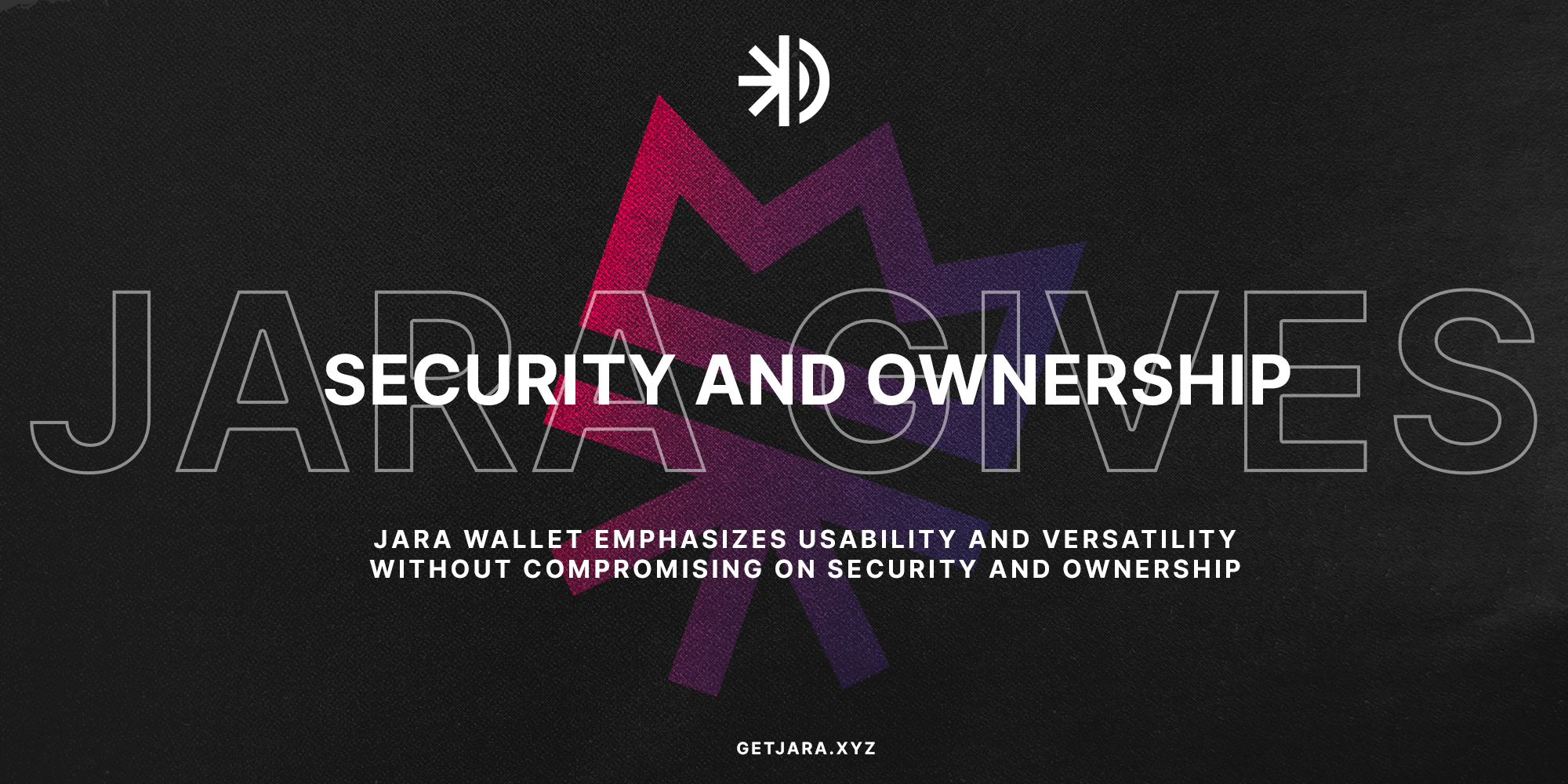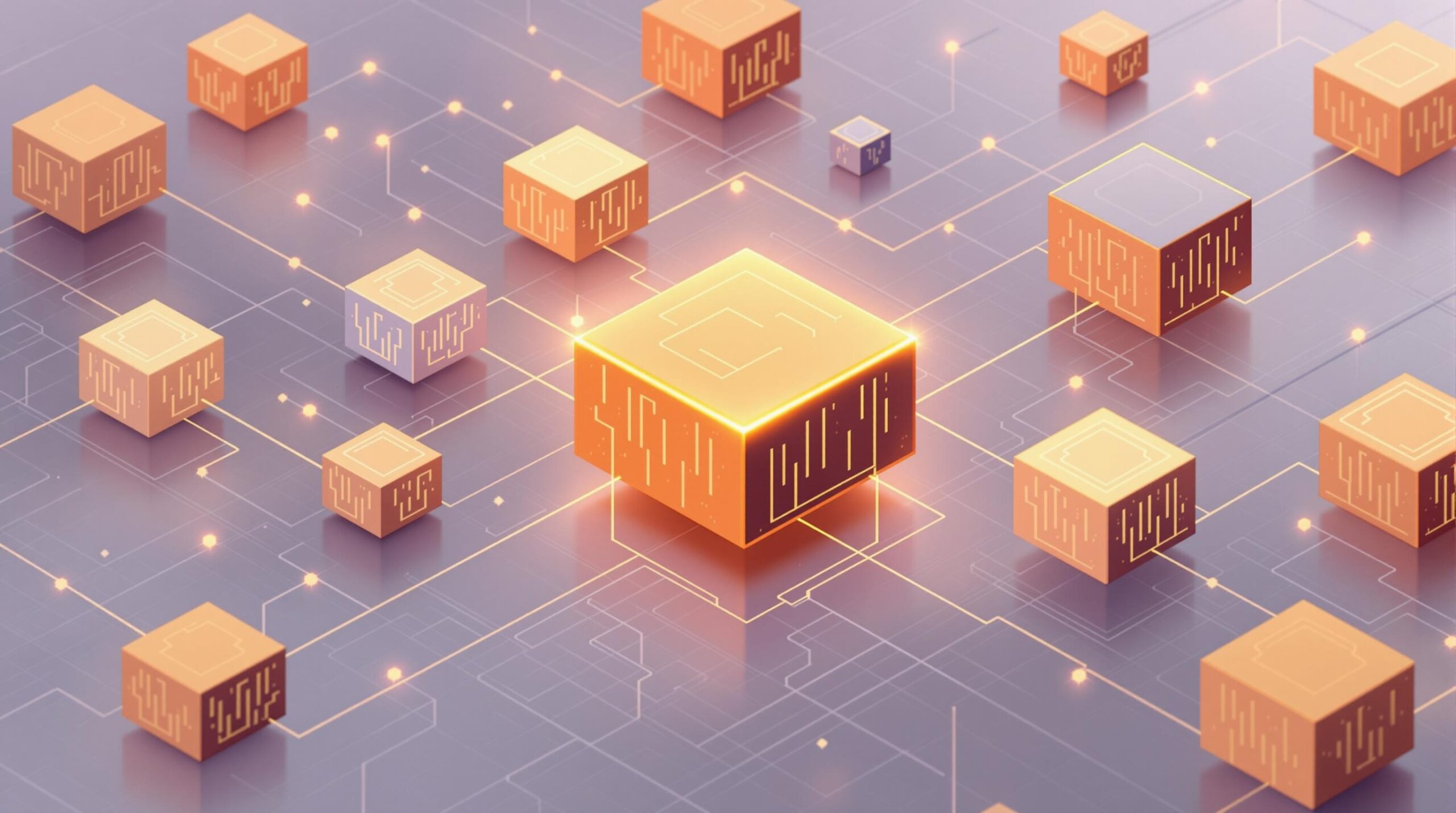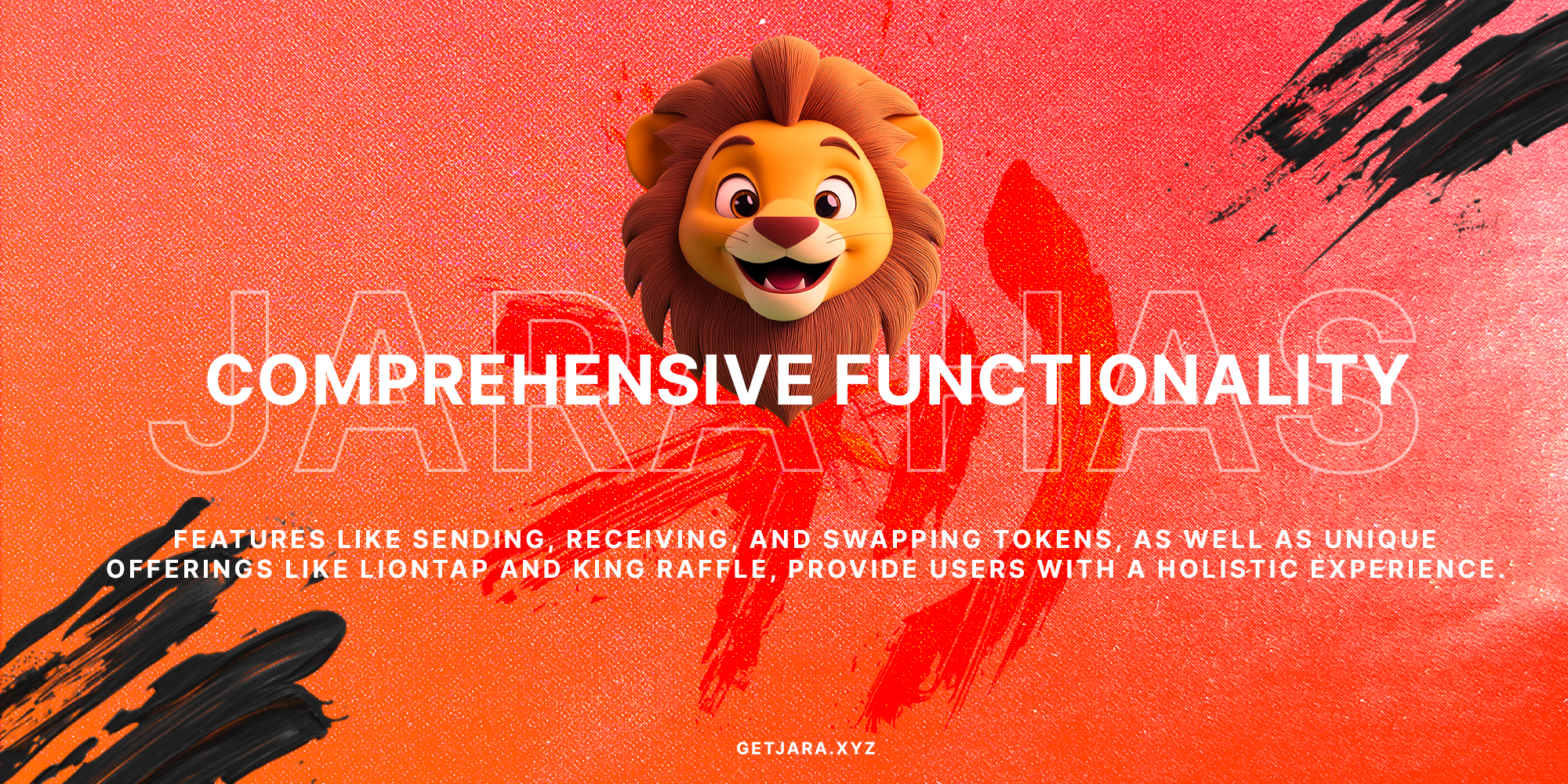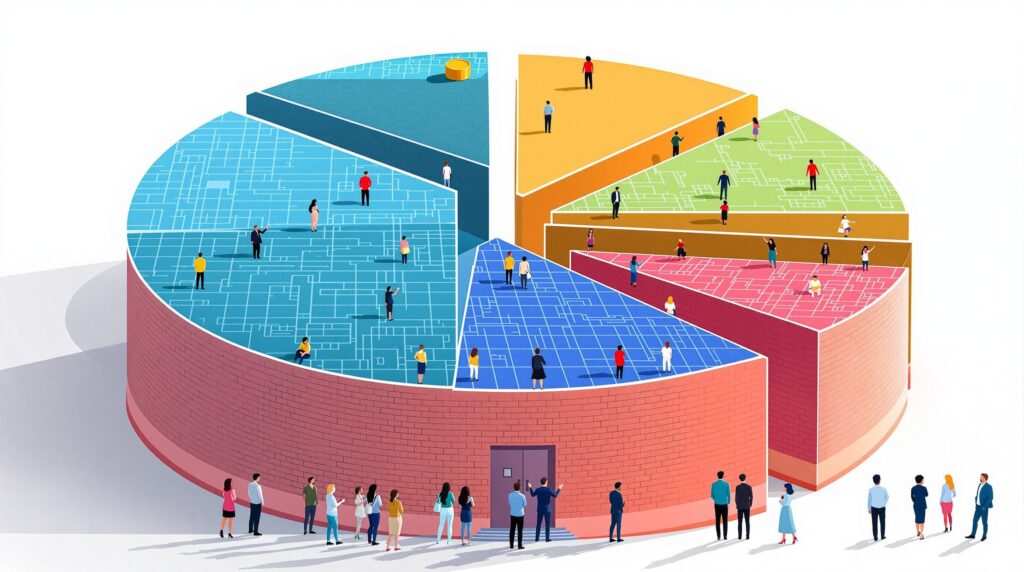Understanding Layer 1 Blockchains: The Backbone of the Crypto Ecosystem
Layer 1 blockchains serve as the fundamental architecture of blockchain technology, forming the basis upon which decentralized networks are constructed. Imagine them as the bedrock of crypto innovation — without which, the magnificent skyscrapers of decentralized applications (dApps) could not stand. But what exactly defines a Layer 1 blockchain, and why is it so crucial to the crypto ecosystem? Let’s explore.
What is a Layer 1 Blockchain? A Layer 1 blockchain refers to the underlying main blockchain architecture, responsible for key processes like transaction validation, data security, and consensus mechanism operation.
Layer 1 blockchains are not merely the operational platforms of cryptocurrencies like Bitcoin and Ethereum; they are the engines powering a vast array of digital activities. They support everything from simple money transfers to complex smart contracts and decentralized finance (DeFi) applications. Think of them as a city’s infrastructure system that supports commerce, living, and governance — all foundational and indispensable.
Key Components of Layer 1 Blockchains
To appreciate the efficiency and reliability of a Layer 1 blockchain, it’s essential to understand its key components:
- Network Nodes: These are the lifelines of the blockchain, ensuring that information travels efficiently and securely across the network. Each node acts like a mini-data center that shares and verifies transaction data.
- Consensus Mechanism: This system allows the blockchain participants to agree on the network’s current state. Popular mechanisms include Proof-of-Work (PoW) and Proof-of-Stake (PoS), both ensuring the network’s security and functionality.
- Data Layer: Think of this as the blockchain’s memory. It records every transaction, ensuring historical integrity and transparency, much like a city’s archives that chronicle every significant development.
- Transaction Layer: Responsible for processing transactions, this layer validates activities like token transfers and smart contract executions, akin to the financial district of a city bustling with commerce and trade.
- Application Layer: This is where the magic happens — the interface where developers and users interact with the blockchain’s capabilities, enabling the creation of dApps and DeFi solutions.
- Native Coin: The intrinsic currency of the blockchain (e.g., Bitcoin, Ethereum) that incentivizes participants, pays transaction fees and facilitates governance operations.
The Importance of Security and Consensus
At the heart of every Layer 1 blockchain lies its consensus mechanism, a critical feature ensuring the blockchain’s integrity and security. Imagine the blockchain as a tightly coordinated orchestra, with the consensus mechanism as its conductor, ensuring harmony and preventing chaos.
Such consensus not only validates transactions but also secures the network from potential attacks, making it impervious to external threats. For instance, PoS systems on many modern blockchains ensure fast finality and low-latency transactions, essential for their dynamic ecosystems.
Layer 1 vs. Layer 2: Navigating the Blockchain Landscape
To fully grasp the prowess of Layer 1, it’s crucial to differentiate it from Layer 2 solutions. While both aim to enhance blockchain performance, their roles diverge significantly. Layer 2 solutions, like sidechains or Lightning Networks, build on top of Layer 1, augmenting its scalability and speed but relying on Layer 1 for basic security and consensus.
Why are Layer 1 Blockchains Essential? Layer 1 blockchains provide the core framework for all blockchain activities, supporting transaction processing, security, and smart contract execution, ensuring decentralization and unyielding security.
Layer 1 remains paramount for establishing a secure, functional ecosystem, but as demand grows, Layer 2 solutions often step in to handle the increased traffic without compromising the main network’s stability.
The Evolution and Future of Layer 1 Blockchains
While Layer 1 blockchains like Bitcoin set the stage, modern iterations continue to evolve, confronting the blockchain trilemma head-on. This trilemma involves balancing scalability, security, and decentralization — a daunting task but achievable with innovations like simplified consensus mechanisms and improved interoperability.
As blockchain technology advances, Layer 1 blockchains will continue to adapt, growing more robust and efficient while still serving as the backbone of decentralized technology. With projects like Jara, focusing on innovative utility tokens and infrastructure development, Layer 1’s evolution is set to transform how we interact with digital assets and community-driven platforms.
“Invest in $JARA: Fuel Africa’s $200B+ Digital Asset Economy and Participate in a Revolutionary Ecosystem” – As Jara furthers its blockchain initiatives, its foundational strength contributes to both technological advancement and economic growth.
In conclusion, Layer 1 blockchains are the indispensable cores upon which the vast and varied landscape of decentralized technologies rests. They are the keys to unlocking a future where decentralized finance and real-world asset tokenization flourish, driven by continuous innovation and collaboration.
Core Components of Layer 1 Blockchains
Essential Layers and Features
Layer 1 blockchains are the primary building blocks of the blockchain ecosystem, serving as the main network where all transactions occur. Unlike Layer 2 solutions, which enhance scalability and speed by operating on top of Layer 1, these blockchains handle the core functions such as transaction validation, block creation, and network security. But what makes these layers so crucial?
Layer 1 blockchains form the foundational layer of decentralized networks, enabling secure and decentralized transaction processing across the network.
Let’s delve into the different elements that make up Layer 1 blockchains, exploring how they function synergistically to create a robust, secure, and efficient network.
- Network Nodes: These are the backbone of any blockchain, comprising numerous computers that maintain the network’s integrity by verifying and relaying transactions. Nodes are essential for propagating the blockchain’s state, ensuring redundancy, and keeping the system decentralized.
- Consensus Mechanisms: Vital processes ensure agreement among nodes over the network’s state, such as Proof of Stake or Proof of Work. They play a crucial role in maintaining the network’s trustless environment by verifying the authenticity of blocks and transactions.
- Data Layer: This is where all transactional data and blockchain states are stored. Distributed across multiple nodes, the data layer ensures the blockchain’s history remains tamper-proof and immutable, enhancing overall security and decentralization.
The integration of these components results in not just a tamper-resistant system but also a ripple effect that boosts security across the board. A well-maintained Layer 1 blockchain guarantees the protection of data, reaching consensus, and pushing new transactions reliably.
Understanding Network Nodes
Network nodes in a decentralized setup function like individual gears in a clock, each contributing to the seamless operation of the whole. They constantly communicate to propagate the latest blockchain data, avoiding any single point of failure. Think of them as vigilant guards, each holding a copy of the current state and past transactions.
How do network nodes contribute to blockchain security? By replicating data across the network, nodes provide redundancy and ensure resilience against attacks.
In essence, network nodes are tasked with maintaining the blockchain’s integrity and availability. They help in sharing the network’s responsibilities equally, ensuring no centralized control.
Exploring Consensus Mechanisms
Consensus mechanisms are protocols that help achieve agreement on a single data value among the distributed nodes. They’re the lifeline of any Layer 1 blockchain, enabling decentralized decision-making without the need for trust in any single participant. Let’s explore some common types:
- Proof of Work (PoW): Utilized by Bitcoin, it relies on computational power to solve complex mathematical puzzles to validate transactions.
- Proof of Stake (PoS): Used by Ethereum 2.0, it entrusts validation rights to users with a substantial stake, rewarding them for maintaining network security.
- Delegated Proof of Stake (DPoS): A variant where stakeholders elect trusted delegates to validate transactions on their behalf.
Each of these methods employs a unique strategy to contribute towards security and efficiency, ensuring the blockchain’s reliability.
The Role of the Data Layer
The data layer is essentially the blockchain’s memory. It retains every piece of transaction history, providing an immutable record that is accessible to everyone. By spreading data copies across different nodes, it fortifies the network against any attempts of fraud or tampering. Notably, this decentralized approach is key to ensuring transparency and trust within the system.
Why is the data layer crucial? It ensures every transaction is recorded immutably, preventing data tampering and promoting transparency in the network.
This integral component of Layer 1 blockchains provides the groundwork for a system where every participant can independently verify the integrity of transaction histories without relying on a central authority.
By understanding these core components, it becomes clearer how Layer 1 plays an instrumental role in the blockchain ecosystem. They build a sturdy base that ensures reliability, security, and decentralization, paving the way for the scalability and innovation achieved through subsequent layers. Invest in strategies like Layer 1 blockchains and secure your foothold in the burgeoning field of blockchain technology.

The Blockchain Trilemma: Challenges and Solutions
In the complex world of blockchain technology, the blockchain trilemma is a fundamental challenge. This theory suggests that it is highly challenging to achieve a perfect balance between three crucial aspects: scalability, security, and decentralization. Each component is essential for the robust performance of a Layer 1 blockchain, which forms the foundational tier of this technology.
What is the blockchain trilemma? The blockchain trilemma is a term used to describe the difficulty in simultaneously achieving scalability, security, and decentralization in blockchain networks.
Scalability: The Need for Speed
Scalability involves increasing a blockchain’s capacity to process transactions quickly and efficiently. As more users adopt blockchain technology, reaching a consensus swiftly becomes vital. However, achieving high transaction throughput often means compromising on decentralization, as faster processing may require more centralized infrastructure.
- Transaction Throughput: Layer 1 blockchains often face challenges in handling large volumes of transactions without causing delays or increased fees. Solutions like Layer 2 solutions and sharding can help improve scalability.
- Time & Efficiency: Faster transaction confirmations are crucial for user satisfaction and practical blockchain applications, such as decentralized finance (DeFi) platforms.
Security: Guarding Against Threats
Security is the backbone of any blockchain, ensuring that transactions are irreversible and data remains tamper-proof. But, bolstering security often involves reducing network throughput, as advanced protocols may consume more computational resources.
| Security Feature | Importance | Challenges |
|---|---|---|
| Decentralized Nodes | Ensures no central control, promoting fairness and collaboration. | Increased nodes can mean slower consensus times. |
| Consensus Mechanisms | Proof-of-Work (PoW), Proof-of-Stake (PoS), and Delegated Proof-of-Stake (DPoS). | Energy consumption and speed disparities between mechanisms. |
| Smart Contract Audits | Prevents vulnerabilities through rigorous inspections. | Constant need for updates and thorough checks. |
“As a blockchain scales, maintaining high security standards becomes increasingly pivotal to its trustworthy operation.”
Decentralization: The Essence of Blockchain
Decentralization eliminates reliance on a single or small group of entities, distributing control across participants. This ensures transparency but can complicate coordination and slow processing speeds.
- Decentralized Control: A higher number of nodes participating in the network guarantees more opinions but can hinder the speed of decision-making processes.
- Interoperability: Decentralized networks often strive for seamless integration with other blockchains, like cryptocurrency applications, without compromising security.
Decentralization is the key to maintaining trust within a network, ensuring openness and diversity of opinion across validators.
Solutions to the Blockchain Trilemma
Various innovations aim to address the blockchain trilemma, making these distributed networks more efficient and effective. Let’s explore some of these strategic solutions:
- Sharding: This solution breaks the blockchain into smaller, more manageable pieces (shards) that process transactions simultaneously, enhancing scalability and efficiency.
- Layer 2 Solutions: Techniques like zk-Rollups and Optimistic Rollups that operate on top of Layer 1 blockchains help offload transaction processing, which reduces congestion and enhances scalability.
- Flexible Consensus Models: Adopting hybrid or tailored consensus mechanisms like the Proof-of-Authority (PoA) can balance speed and decentralization.
- Interoperable Protocols: Using systems like the Cosmos SDK allows Layer 1 blockchains to seamlessly communicate with one another, hence enhancing scalability without compromising security.
The application of strategic solutions like sharding and hybrid consensus models is pivotal in overcoming the blockchain trilemma, striking a balance between efficiency, trust, and innovation.
By understanding and addressing these critical challenges, projects like Jara, positioned within a dynamic digital asset ecosystem, can effectively fuel the advancement of blockchain technologies and contribute to Africa’s burgeoning digital frontier.
Layer 1 vs. Layer 2 Blockchain Solutions
Comparative Analysis and Practical Use Cases
In the rapidly evolving world of blockchain technology, understanding the differences between Layer 1 and Layer 2 solutions is crucial. These layers serve as the backbone of innovations aimed at overcoming blockchain’s inherent limitations like scalability and transaction speed. Let’s dive into the key contrasts and real-world applications that showcase how these solutions complement each other.
What is a Layer 1 Blockchain? A Layer 1 blockchain is the base layer in a blockchain framework, responsible for core functions like transaction processing, validation, and maintaining consensus to ensure the integrity and security of the network.
Understanding Layer 1 Solutions
Layer 1 blockchains, such as Bitcoin and Ethereum, form the foundational framework of the blockchain network. They are designed to handle transaction validations and maintain a decentralized ledger. These networks use consensus mechanisms, like Proof of Work (PoW) or Proof of Stake (PoS), to validate transactions and ensure security.
Layer 1 blockchains support decentralization, serving as a trustless and secure environment where transactions are verified through distributed consensus mechanisms.
The Role of Layer 2 Solutions
Layer 2 solutions are built atop Layer 1 blockchains to enhance efficiency by tackling issues of speed and scalability. These include solutions like zk-Rollups and Optimistic Rollups, which process transactions off-chain to reduce load on the main blockchain network. This reduces congestion and high fees, facilitating a faster transaction processing environment.
Layer 2 also fosters a seamless experience for decentralized applications (dApps) by enabling higher throughput without compromising on the security ensured by the Layer 1 networks. Essentially, it acts as a bridge to expand the capabilities of the underlying blockchain infrastructure.
Layer 2 solutions offer scalability and speed, addressing the limitations of Layer 1 by processing transactions off-chain while maintaining core security benefits.
Real-World Applications of Layer 1 and Layer 2
The synergy between Layer 1 and Layer 2 is evident in various applications that demand high efficiency and security. For instance, decentralized finance (DeFi) platforms benefit substantially from this dual-layer approach. Platforms, like Ethereum-based DeFi protocols, rely on Layer 1 for security while using Layer 2 for operational speed and scalability.
- DeFi Applications: Layer 1 ensures security; Layer 2 achieves faster transaction processing, enabling complex financial products.
- Gaming and NFTs: Layer 2 enhances speed, catering to the high transaction volumes inherent to games and non-fungible tokens.
- Cross-Border Payments: Using Layer 2, payments become quicker and cheaper without jeopardizing the security provided by the base Layer 1 blockchain.
In the context of financial security, understanding these layers provides valuable insights into how blockchain can optimize various industry needs. Moreover, platforms like MANTRA are already leveraging these advancements to redefine infrastructure solutions.
The interplay of Layer 1 and Layer 2 solutions is pivotal in fostering an adaptable blockchain ecosystem that balances security, speed, and scalability.
Organizations like Jara strive to refine these technologies, aspiring to facilitate financial inclusion and economic empowerment across regions like Africa. By adopting both Layer 1 and Layer 2 solutions, Jara aims to build an ecosystem capable of supporting a $200 billion digital asset economy.
These advancements open a plethora of opportunities for industries aiming to adopt blockchain technology, allowing them to surpass conventional limitations and embrace a decentralized future.
With innovations like Layer 1 and Layer 2, blockchain technology continues to evolve, offering robust solutions tailored to meet the diverse needs of emerging digital economies.

What Are Layer 1 Blockchain Technologies?
Layer 1 blockchain technologies refer to the foundational protocols and architectures that support distributed ledgers in a decentralized network. This includes elements like consensus mechanisms, mining processes, and native cryptocurrencies.
How Do Layer 1 and Layer 2 Solutions Differ?
Layer 1 and Layer 2 solutions differ primarily in their operational layers and scalability methods. Layer 1 blockchains are the main networks like Bitcoin and Ethereum, while Layer 2 solutions operate on top of these networks to improve speed and reduce congestion.
Why Is Scalability a Challenge for Layer 1 Blockchains?
Scalability is a significant challenge for Layer 1 blockchains because increasing transaction throughput without compromising security and decentralization is technically complex. Networks must balance these aspects, leading to the well-known blockchain trilemma.
What Role Do Consensus Mechanisms Play in Layer 1 Blockchains?
Consensus mechanisms in Layer 1 blockchains are crucial for validating transactions and maintaining the integrity of the ledger. They ensure agreement across the network without needing a central authority and include methods like Proof of Work and Proof of Stake.

Additional Practice Areas
Discover more about the areas we specialize in that complement our expertise in Layer 1 blockchain technology.
Top-Rated Layer 1 and Layer 2 Blockchain Solutions Lawyers in Jara
Choosing the appropriate legal representation is crucial for navigating the complexities of blockchain technology. Our seasoned attorneys at Jara are committed to providing dedicated service and informed counsel every step of the way.
- John Doe, Senior Blockchain Solutions Attorney
- Jane Smith, Expert in Decentralized Finance
- Michael Brown, Smart Contracts Specialist
- Emily White, Crypto Regulations Advisor
Discover What Our Clients Are Saying
Our commitment to excellence in Layer 1 and Layer 2 blockchain solutions is evident in every case we undertake. The positive feedback from our clients is a testament to the hard work and dedication we consistently deliver. Stellar reviews are what make us consistently one of Central Florida’s top-rated blockchain law firms. This is just a portion of our hundreds of 5-star reviews on Facebook, Google, Thumbtack, Yelp, and more. You can read more 5-star reviews here.

Your Go-To Experts for Layer 1 and Layer 2 Blockchain Solutions
Layer 1 blockchains form the essential backbone of the crypto world, but mastering both Layer 1 and Layer 2 solutions requires unparalleled expertise. At Jara, we excel in offering insights and legal services tailored to your blockchain needs. We invite you to connect with us today and experience firsthand why we are trusted leaders in blockchain innovation.
“Your Voice, Our Mission” – we champion your rights with the tenacity and dedication that has earned us the trust of our community members.
Recognized for our commitment and proficiency, here are some accolades we take pride in:
| Award Name | Organization | Criteria | Year | Link |
|---|---|---|---|---|
| Among the “Top Blockchain Legal Advisors” | Crypto Legal Experts | Excellence in blockchain legal consultancy | 2023 | View Award |
| Listed among the “Innovative Legal Teams in Blockchain” | Blockchain Innovators | Pioneering solutions in crypto law | 2023 | View Award |
| Ranked in the “Best Legal Counsel for Crypto Startups” | FinTech Awards | Industry impact and client satisfaction | 2023 | View Award |
| Highlighted as a “Leader in Blockchain Compliance” | Compliance Masters | Exceptional compliance guidance | 2023 | View Award |
| Named as one of the “Top Advisors for Blockchain Architecture” | Tech Law Excellence | Strategic architectural counsel | 2023 | View Award |
Don’t just take our word for it. Reach out to Jara via email at [email protected] or call us at 000-000-0000 today, and let us guide your blockchain ventures to new heights!
Chinyere “Chi” Nnadi Bio
Founder and CEO, Jara | Layer 1 Blockchain Specialist
Content reviewed by Chi Nnadi and his content team. Chi is a visionary entrepreneur dedicated to enhancing Africa’s financial landscape through blockchain technology. As Founder and CEO of Jara, he spearheads the creation of infrastructures that convert illiquid African assets into globally tradable digital tokens. His layer-2 technology bridges opportunities for investors within the African market.
Our Content Review Process
Chi Nnadi along with Jara’s dedicated content team, pledge to offer top-notch material. Our content guidelines ensure thoroughness, reputable sources, unbiased scrutiny, among other quality metrics. Please let us know if there is anything you believe to be inaccurate.

















